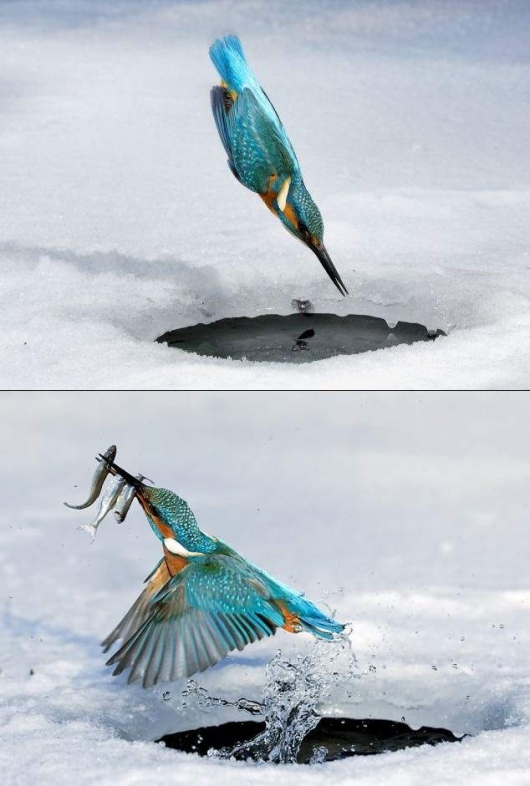 I’m going to build this one in stages. Putting together the research in order to eventually build a map of my grandfather’s path through 1940s France will take some time.
I’m going to build this one in stages. Putting together the research in order to eventually build a map of my grandfather’s path through 1940s France will take some time.
The goal is to work out how my granddad, William Morris, worked his way through France as the British Expeditionary Force and the French military collapsed under the weight of the German Blitzkrieg during the Battle of France.
 What I know so far:
What I know so far:
Bill was already a member of the RAF when the war began. He was able to operate everything from heavy trucks to motorbikes and found himself supplying Hurricane squadrons in France as a heavy lorry operator. Being stationed in France as a part of the British Expeditionary force in 1939/40, when the Blitzkrieg began he started to make his way to the coast. He got close to Dunkirk at the end of May but the chaos made it look like a bad idea, so he kept pushing south, avoiding the fast moving German Panzer divisions that were pushing into France in huge leaps.
 |
| Sinking of the Lancastria in the National Maritime Museum |
He got down to St Nazaire by mid-June and witnessed the sinking of the Lancastria – where more people were killed in a single sinking than in the combined losses of the Titanic and the Lusitania; it’s the largest single maritime loss of life in British history.
By this point it must have seemed like the world was ending. Here’s a quote from the man himself:
“When Paris was made a free city (June 11th) the British Expeditionary Force had to evacuate and make for St. Nazaire. The roads were clogged with retreating troops and equipment. What couldn’t be carried was destroyed. We arrived in St. Nazaire in the afternoon just in time to see the ship that was to carry us out destroyed by dive bombers. An officer directing traffic suggested we try to make for Brest. We arrived there two days later just as the last ship was preparing to leave, I had to leave my German Shepherd behind on the docks as there was no room for her on the boat.”
Bill got out of France through Brest on June 13th, 1940 – over two weeks after Dunkirk. From May to June, 1940, Granddad saw more of France than he probably intended. His unit was disbanded due to losses, but I’m not sure which squadron he was attached to. A number of them were decimated trying to battle BF109s with biplanes. The few Hurricane squadrons could stand up to the Messerschmidts but were badly out numbered and inexperienced. If the documents I’ve got are accurate and he was providing support to a Hurricane squadron east of Paris, then there are a number of candidate RAF squadrons who were based around Reims.
At some point the planes and air crews must have taken off and left the support people, including Bill, to try and find their own way out. He had been missing for so long and so many British soldiers were lost in the Battle of France, that he was declared missing or dead. When he got back on British soil and was given leave, Bill headed straight home to Sheringham in Norfolk where he waited on the street for my grandmother to walk by on her way to work. She must have been stunned to see that ghost standing there. Bill always had a flare for the dramatic.
This is the opening chapter in a war story Bill never talked about, but I’ve been trying to piece back together from existing details. A couple of interesting things could come out of this…
1) Build up a map of Bill’s route through France in 1940. Put together a collection of World War 2 era British bikes and ride them from the air field he was stationed at and follow the meandering route he may have followed, stopping at the places we have evidence he was, eventually ending where he escaped the continent. I’ve got two brothers and several cousins, all direct relatives of Bill’s, who could do this ride with me.
 |
| Films like Chris Nolan’s Dunkirk shine a light on the often ignored early moments of World War 2. There is more work to be done. |
We could do it on the 80th anniversary of the Battle of France in May and June of 2020. It’s a forgotten moment in the war that is often misunderstood and mocked historically. The French didn’t surrender (in fact they bloodied the nose of an otherwise technically superior German force and vitally weakened it prior to the Battle of Britain. There would have been hundreds more German planes and thousands more personnel available for the Battle of Britain had the French military and British Expeditionary Force not fought as they had in France. Bill’s journey would be an opportunity to highlight a lot of that forgotten and misunderstood history.
2) This is the first part of William Morris’s rather astonishing path through World War 2. His improbably survival (he was the member of multiple units that got disbanded due being decimated in battle) is the only reason I’m here today, so I find it fascinating. Had Granddad not survived the war he would never have fathered my mum in 1946. Our family exists as it does today because of his survival. A longer term goal would be to put together a based on true events story of Bill’s experiences during the war, from his time in occupied France, to his work retrieving wrecks during the Battle of Britain, to his years in the desert in the later half of the war, his story sheds light on a working man’s experience in the military. So often the attention has been on the wealthier officer class of pilots and commanders, but this is a look at World War Two from the trenches (so to speak).
3) If the book got written, it’d make for one heck of a TV or film series!
Meanwhile, the research continues…
https://www.nortonownersclub.org/history/1936-1945-wd
http://www.classic-british-motorcycles.com/bsa-m20.html
Triumph Tiger 100 (not used in service but might have been found in 1940s France)
Ariel W/NG 350
https://en.wikipedia.org/wiki/Ariel_W/NG_350
https://www.autoevolution.com/moto/ariel-w-ng-350-1940.html#aeng_ariel-w-ng-350-1940-350
https://youtu.be/BXHyCoZsj3s
Matchless 3G/L
https://en.wikipedia.org/wiki/Matchless_G3/L
http://www.realclassic.co.uk/matchless07032600.html
http://www.ww2incolor.com/forum/showthread.php/9538-British-Allied-Motorcycles-with-Sidecars
A paper I wrote for a history course at university in 1996: https://docs.google.com/document/d/14N2QfA8P8UQP_YK426gUZlGNbP7NNCcJcsd31OAaDVQ/edit?usp=sharing
http://www.historynet.com/fall-of-france
Bloodiest Battles of WW2:
http://www.militaryeducation.org/10-bloodiest-battles-of-world-war-ii/
The WW2 soldiers France has forgotten
http://www.bbc.com/news/magazine-32956736
Aircrafts and bases of the Royal Air Force on May 10, 1940
https://ww2-weapons.com/raf-squadrons-in-may-1940/
|
Berry-au-Bac (France)
|
|
Merville (France)
|
|
Douai (France)
|
|
Poix (France)
|
|
Rosieres-en-Saneterre (France)
|
|
Reims (France)
|
|
Lille (France)
|
|
Betheniville (France)
|
|
Villeneuve-les-Vertus (France)
|
|
Conde-Vraux (France)
|
|
Berry-au-Bac (France)
|
|
Reims (France)
|
|
Vintry-en-Artois (France)
|
|
Abbeville (France)
|
RAF in France 1940, (Fighting against Odds)
“British losses in the Battle for France: 68,111 killed in action, wounded or captured. Some 64,000 vehicles destroyed or abandoned and 2,472 guns destroyed or abandoned.”
Association Maison Rouge
http://amrvraux.com/
OTHER RELATED RESEARCH:
Moto-raids into occupied France (from a January 1941 article): might be good as a chapter piece between the BoF, the Battle of Britain and heading off to the desert…
from Blogger http://ift.tt/2FQepJ3
via IFTTT






































